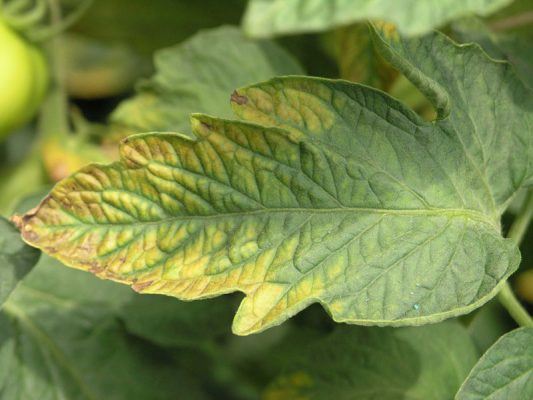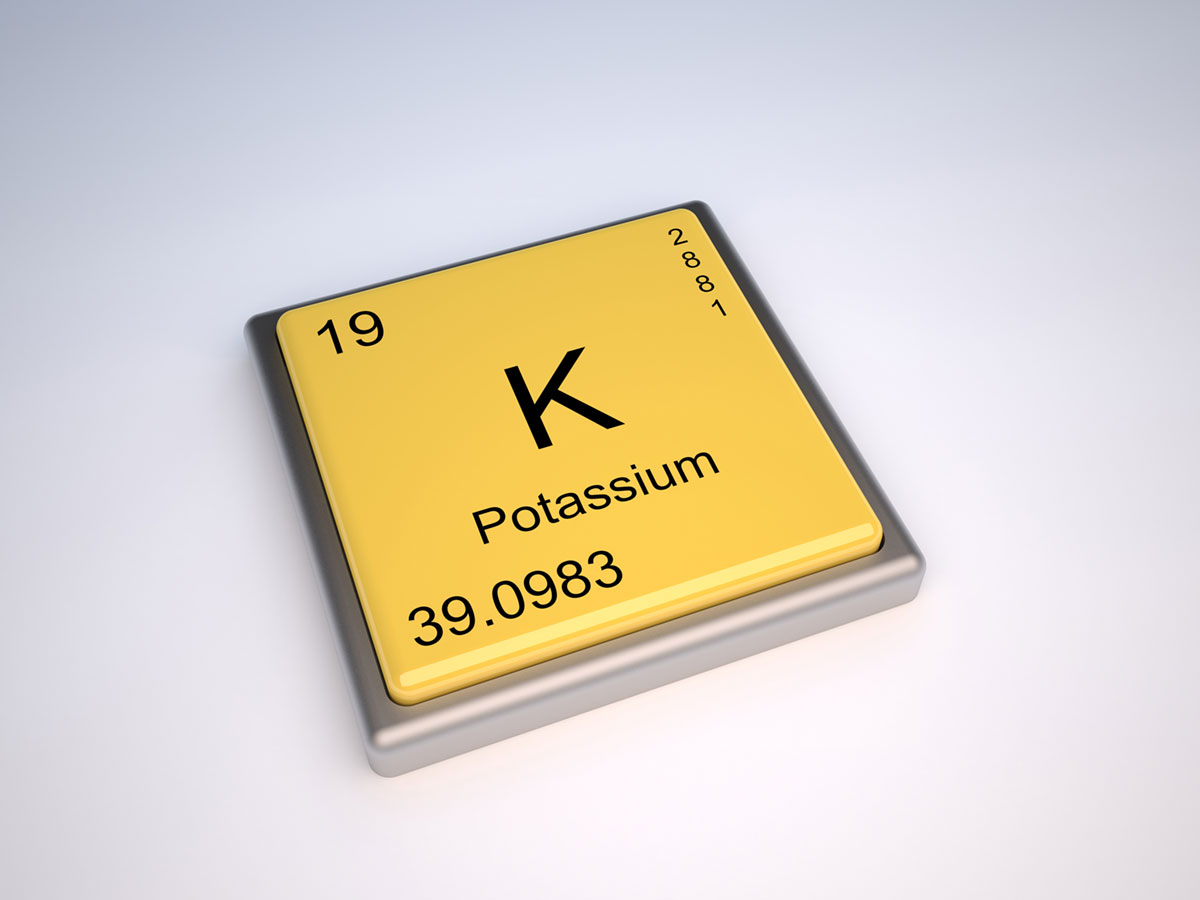If you’ve ever experienced stunted or yellowing plants, you might be dealing the potassium deficiency in plants. Potassium, denoted as K, is a plant macronutrient that is crucial to plant growth. Without it, plants cannot reach their full growth and yield potentials.
The good news is that with the proper knowledge and products, you can provide your plants with the proper amount of potassium. This will allow plants to properly regulate internal processes.
Read below to learn about topics including the signs of potassium deficiency, the best sources of potassium for plants, plant nutrients, and best hydroponic nutrients.
The Role of Potassium in Plants
Potassium is important to many different plant functions. Without it, plants cannot survive.
Potassium is the only nutrient which remains in solution in plants. This means that is does not combine with other elements to form carbohydrates, proteins, or other compounds. Instead, it moves throughout the plant in a water soluble form. In the plant, potassium exists as a positively charged ion known as a cation.
If potassium doesn’t make up plant compounds, what does it do? It is involved with helping with plant adjustment. It activates and regulates many plant functions including photosynthesis and the formation of ATP and proteins. So, even though it isn’t in many plant cells or compounds, it is essential to the formation of them.
Potassium also helps regulate the stomata, the tiny openings plants use to “breathe” and control water loss. Therefore, it helps prevent wilting. It also helps roots grow deep which contributes to increased drought tolerance.
Potassium in the Soil
Soils are often high in potassium. However, not all forms are available to plants. Much of the potassium in soil is held in the form of rocks. This form is not available to plants until the rocks are weathered; a process that can take thousands of years.
Other pockets of potassium are held in fixed forms in clay. These are thought of as a reservoir of potassium. If plants use up all available potassium, more may be released from that which is held in clay. This form may be released during a growing season, but not always.
The form of potassium that is available to plants is dissolved in water. This form is easily taken up by plants and has an immediate impact if it is applied by the grower.

Signs of Potassium Deficiency in Plants
Signs of potassium deficiency can be observed in plants. However, by the time these signs are seen, the plants are already weakened.
So, it’s best to be proactive. How? Test your soil or growing media and apply any needed potassium while plants are still small.
If you didn’t test your growing media and your plants do look unhealthy, what signs indicate that a potassium deficiency is the cause?
It does depend on the plant, as signs of potassium deficiency are different for different plants. However, some main points apply to all plants.
Potassium is a mobile nutrient, meaning it moves throughout the plant. As with all mobile nutrients, deficiency symptoms will first appear in older leaves. If your plants don’t have enough potassium, margins of the lower leaves will turn yellow or brown. This symptom is known as marginal chlorosis.
A lack of potassium can also cause wilted plants, as potassium regulates water loss in plants. So, if your plants are wilting more than you think they should be, it is worth checking the soil and plant potassium levels.
Best Sources of Potassium
So, since potassium is so important, how can you provide it to your plants? By providing the plant with nutrients in the form of fertilizer. Most fertilizers provide a content of potassium in the form of potash ( K2O) equivalent. However, potassium is rarely applied in this form.
Like most nutrients, potassium is available in organic and conventional forms. The choice of which type to use is up to you. Both forms have their pros and cons.
No matter if you use organic or conventional fertilizers, you may be adding something that started as a mined substance. Some of these materials are applied in their raw, unaltered form, while others are altered in processing plants.
Langbeinite, greensand, and seaweed are all organic forms of potassium. Potassium is also found in compost and manure. Other sources include potassium chloride (KCl) and potassium sulfide (K2SO4).
Plant Nutrients
So, now that we’ve learned about potassium, what can we learn about other nutrients?
First off, remember that plants cannot properly take up nutrients if you do not practice a good plant feeding routine. This involves selecting a proper fertilizer and providing adequate water for the plants.
Second, know that plants require different amounts of nutrients depending on the type of crop, medium the plant is growing in, and it’s growth stage. For example, plants with a short flowering time need high amounts of available potassium relative to other nutrients. A product like Green House Feeding Short Flower is perfect for this purpose.
Also know that just because a nutrient is in the soil does not mean a plant can take up and use this nutrient. This does create some challenges with providing your plants for the proper nutrients. However, the proper products can help.
Substances known as humic acids help plants take up nutrients. Fortunately, some fertilizers contain both nutrients and humic acids.
The presence of certain nutrients also impacts the availability and uptake of other nutrients. Maintaining a proper balance of nutrients in soil or solution helps prevent deficiencies within plants.
Best Hydroponic Nutrients to Prevent Calcium Deficiency in Plants
The best hydroponic nutrients provide plants with the proper balance of nutrition. Different balances of nutrients are needed depending on the type of plant and stage of growth. Select a product which matches the needs of your plant.
Some products are meant for the early growth stages of the plant, while others provide nutrients that are needed for flowering and fruit set.
Wrapping Up Potassium Deficiency in Plants
Now you know the importance of potassium in plants, and how to avoid deficiencies. As with all nutrients, potassium is essential for plant growth and health. Adding nutrients allows growing plants to reach their full potential.
When adding nutrients, make sure you select a product which meets your plants needs
